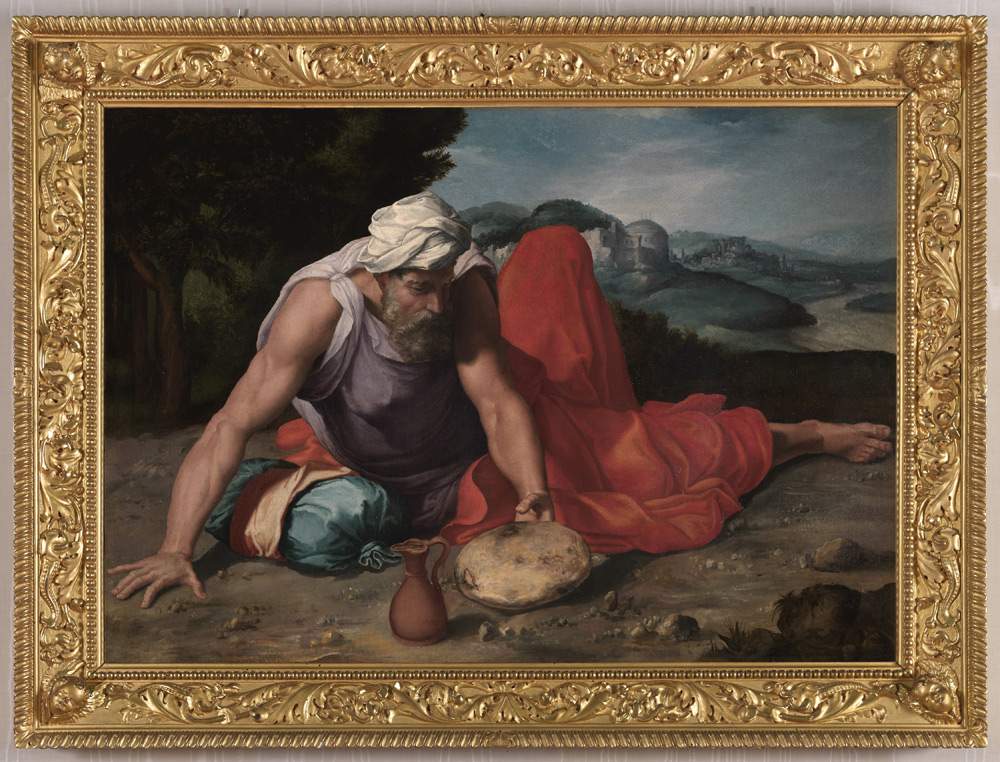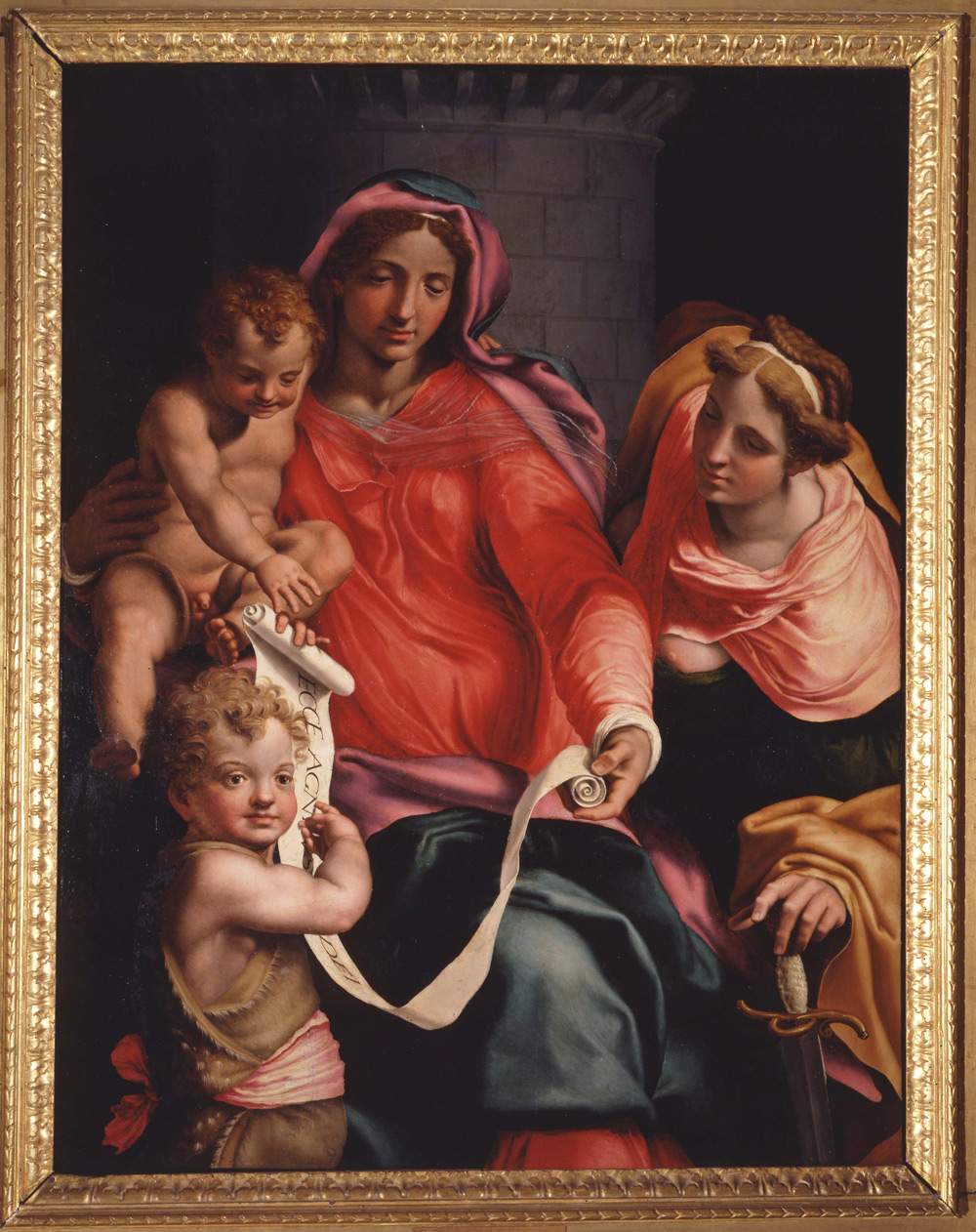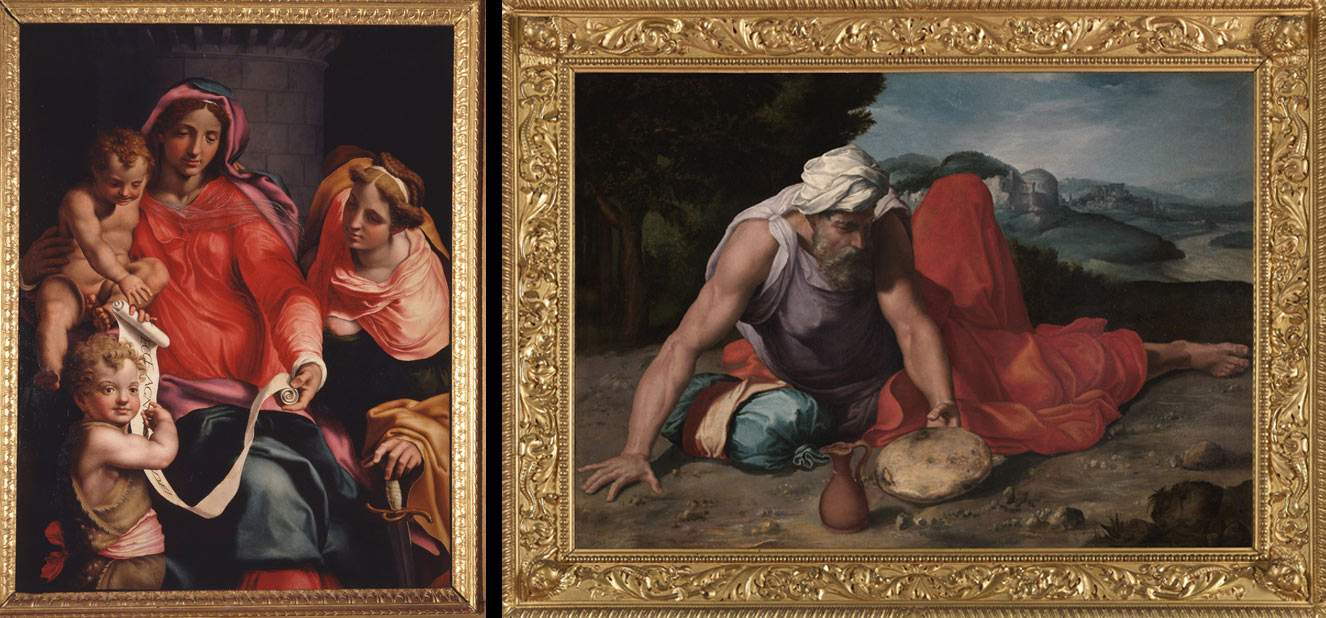A committee of intellectuals (46 personalities including superintendents, inspectors, museum directors, ordinaries, academy professors, collectors, academicians of the Lincei, members of the CNR, magazine editors, painters, sculptors, architects, and writers) is appealing to the Uffizi Galleries to reconsider the destination of the two “Sienese” paintings by Daniele da Volterra (Daniele Ricciarelli; Volterra, 1509 - Rome, 1566), the so-called “d’Elci paintings”(here our in-depth article on the occasion of the exhibition that displayed them in 2017 at Palazzo Corsini), so called because they once belonged to the Pannocchieschi d’Elci counts of Siena, who inherited them from the direct descendants of the Volterra painter. The two paintings, an Elijah in the Desert and a Madonna and Child, St. John and St. Barbara, were purchased by the Uffizi: the first in 2018, the second this year, during the days of the Florence Biennale Internazionale dell’Antiquariato. The committee proposes, as stated in the full text we publish below, to involve the Pinacoteca Nazionale di Siena in the discussion on the placement of the two important works, two masterpieces by the 16th-century artist. Images of the two paintings and the text of the appeal, with the full list of signatories, follow. The appeal is open and anyone can join: simply send your name to the email address comitatointellettuali@gmail.com
 |
| Daniele da Volterra, Elijah in the Desert (c. 1543; oil on canvas, 81 x 115 cm; Private collection). Photo: Andrea Lensini, Siena |
 |
| Daniele da Volterra, Madonna and Child, St. John and St. Barbara (c. 1548; oil on panel, 131.6 x 100 cm) |
The Uffizi’s purchase of the Madonna and Child with Saints John and Barbara by Daniele da Volterra (1509-Rome 1566) was unveiled at the Florence Biennale dell’Antiquariato, a purchase that follows the 2018 purchase ofElijah in the Desert, another work by the same artist.
The transaction conducted by the Uffizi is certainly of great significance and ensures the Italian state two masterpieces of the 16th century that the public will be able to enjoy in their entirety; thus the press, with unanimous chorus, has rightly praised the initiative orchestrated by Eike Schmidt, director of the Uffizi, who has always been attentive to an acquisition program, both by raising awareness of donations and by keeping a watchful eye on the antiquarian market, to ensure an action of knowledge and enrichment of the national heritage.
The two masterpieces by Daniele da Volterra had been kept for two centuries in the Pannocchieschi d’Elci palace, overlooking Siena’s Piazza del Campo, with a family related to that of the artist. Their presence in Siena documents one of the highest episodes of the city’s historical collecting and testifies to the development of the local school, since Daniele da Volterra was trained in Siena.
Beyond the various critical positions leavened in the local press and on social media, which have voiced reasoned objections to the final destination of the two paintings, touching, at times centering, on the still open question of how historical and artistic heritage can increase the visibility and awareness of the cultural identity of territories, toward which the attentions of the Ministry of Cultural Heritage and Activities go. Identity is not an abstract edge of a border, but rather the threshold that binds the parts, constructs, in multiplicity, the territory.
The issue opens questions that concern not only Siena, as in this case, but the very criterion of purchases by Italian state museums. Great museums, supported also by generous private funders, must increase and solicit knowledge of the heritage and historical memories of a wider local context, making themselves the flywheels of a wide and capillary recognition of the artistic heritage that qualifies Italy as a ’diffuse museum.’ A peculiar characteristic well noted by Minister Franceschini, who intends to exalt the territory and confirm in it its masterpieces, as repositories of identity in which each citizen finds the values, history and cultural dimension of the community to which he or she belongs.
The minister’s intentions (and consequent interventions), if practiced wisely, will enable the reactivation of a fruitful link between individual local realities and the national sphere. In short, it is a matter of indulging, as Alberto Magnaghi(The Local Project) observed, a “virtuous relationship between the city and its territorial and environmental heritage: a relationship that becomes a regenerative source of abandoned and destroyed energies.” This attention to the local, it should be emphasized to avoid misunderstandings, has nothing to do with mere parochial closure; instead, it aims to cure “the collective and destructive amnesia” that sometimes falls on cities, as highlighted by Salvatore Settis in If Venice Dies. Preserving works of the past in the territory leads to the revitalization of memory and the ability to understand the meaning and value of the heritage of our cities, and in this case of Siena. Therefore, it is not a matter of choosing an anachronistic isolation, but of stimulating citizens to a greater awareness of their own history, not out of mere antiquarian taste but to live the present and the future in an evolutionary and active way, within a network of solidary relations, capable of dialogue with other centers, regional, national and extra-national.
Conversely, to decontextualize artistic testimonies would mean giving up the effort to put a curb on the rampant collective mental void that afflicts local communities about their own cultural tradition; and might even increase the lethal disinterest in our heritage, which needs the commitment of all inhabitants, region by region, city by city, country by country. A disinterest that in essence would also foster the decline of civic sentiment and, with it, the quality of life.
Since the process of acquiring the two paintings by Daniele da Volterra seems not yet concluded (at least for the Madonna with Child and Saints), we ask the Uffizi management and the financiers who made such an intervention possible, to rethink their destination, offering the city of Siena, its Pinacoteca Nazionale, to feel that they are co-participants in a process of cultural renewal, aimed at weaving a closer collaboration in the ’museum system’ of Tuscany and the Nation.
A committee of intellectuals: art historians, artists, writers, architects. Signatures: Marcello Aitiani, Cecilia Alessi, Giovanni Antonucci, Mario Ascheri, Duccio Balestracci, Azelia Batazzi, Duccio Benocci, Mauro Berrettini, Massimo Bignardi, Marco Bussagli, Pierluigi Carofano, Maria Assunta Ceppari Ridolfi, Marco Ciampolini, Mauro Civai, Alberto Cottino, Mauro Cozzi, Giovanna Damiani, Cordelia von den Steinen, Pietro Di Loreto, Marcello Fagiolo, Marco Figura, Dalma Frascarelli, Silvia Guidi, Matteo Guidotti, Riccardo Lattuada, Fabrizio Lemme, Alessandro Leoncini, Enrico Lucchese, Giovanni Marziali, Giorgio Mencattini, Emilio Negro, Paolo Neri, Paolo Nucci Pagliaro, Ettore Pacini, Ettore Pellegrini, Francesco Petrucci, Massimo Pirondini, Antonio Prete, Nicosetta Roio, Roggero Roggeri, Stella Rudolph, Vinicio Serino, Simona Sperindei, Nicola Spinosa, Anabel Thomas, Enrico Toti, Patrizia Turrini, Vincenzo Vizzini.
 |
| Intellectuals appeal to Uffizi: rethink destination of Daniele da Volterra paintings |
Warning: the translation into English of the original Italian article was created using automatic tools. We undertake to review all articles, but we do not guarantee the total absence of inaccuracies in the translation due to the program. You can find the original by clicking on the ITA button. If you find any mistake,please contact us.